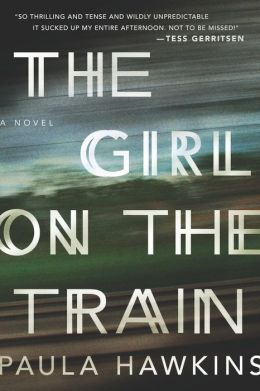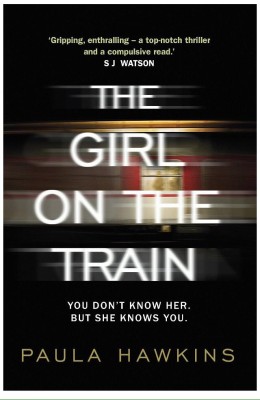There is no set formula for how a book generates buzz, however, there are certain books each year that start to appear on the general consciousness of the public for whatever reason. It starts with industry buzz during the manuscript stages, then the reviewers start to chime in once the advanced reader copies have gone out, and finally mainstream press start to cover the author and the novel. No one knows why this happens and sometimes the hype is warranted and sometimes less so. In the case of Paula Hawkins’ debut novel, The Girl on the Train, the buzz is legit and attention must be paid.
Many comparisons to other bestselling novels have been made, but the reality is that The Girl on the Train is quite unique in its storytelling style, plot, and resolution. Putting all of that aside, the novel is simply a strong addictive debut and a book that most fans of psychological thrillers are sure to enjoy.
The idea of the unreliable narrator has been a trope of literature for a very long time. In The Girl on the Train, Paula Hawkins triples the concept by giving readers three very different, but equally unreliable point-of-view characters. In doing so, Hawkins weaves a complex web that can only be understood as all the narratives collide.
First there is the titular character of Rachel Watson. Rachel is a virtually homeless, divorced alcoholic who travels via train to her place of employment. Because she travels that same route at the same time every day, she has begun to make up stories about one couple she sees outside the train window every day. Their house is located in an idyllic neighborhood outside of London and all Rachel knows of them is what she sees through the train window. She creates names, emotions, and history for them – all in her mind.
The second narrator is Megan Hipwell, the female half of the couple living at the home that Rachel is watching. She and her husband communicate well and had a bit of a dream courtship, but she now regularly sees a psychiatrist for bouts of insomnia, depression and frequent panic attacks. It seems like a bit of a disconnect, but is that really what is going on? And if so, why?
The last point-of-view which readers are privy to is that of Anna Watson, the insecure new wife of Rachel’s ex-husband. She is a harried new mother who has isolated herself partly due to the frequent and unwanted contact she and her husband constantly receive from a drunken Rachel.
Paula Hawkins intertwines the lives of these three women in multiple ways to the point that the reader will require the time and date stamps that start off each chapter to orient themselves within the timeline. When one of these women suddenly goes missing, the impact on the other two cannot be under-estimated – and therein the plot lies.
Looking at this novel’s structure in a unique way shows just how complex the whole is. Remember back in Chemistry class when you first heard about atoms and how they are built from protons and neutrons (in the central nucleus) with electrons orbiting around them? If readers think of these narrators as being similar to those atom components, they will see that over the course of the novel, there are clusters of “chapter atoms” (some with Rachel/Megan as the nucleus and Anna orbiting or Anna/Rachel as the nucleus with Megan orbiting and so on). Similar to actual chemistry, the interactions of these atoms will create new reactions. Sometimes they fuse together while other times they may repel completely. It is only when you get the whole mix together (in this case, the entire novel) that the reactionary outcome can be determined. The only problem is that with human nature, unlike chemistry, the results are virtually unpredictable.
With The Girl on the Train, Paula Hawkins has created a complex, yet completely believable plot which will keep readers on tenterhooks throughout. With this as a debut novel, there is no telling what Paula Hawkins is going to have in store for readers with round two. Readers, don’t miss this train.
______________________________________________________________________
Disclaimer: An e-galley of this title was provided to BOLO Books by the publisher. No review was promised and the above is an unbiased review of the novel.



Your comments about how a book generates buzz are interesting. I read this book very early, almost as soon as the ARC was available on Edelweiss — and thought right away that it would be popular. But I’ve thought that about other books that, for one reason or another, never got the recognition they deserved. There are so many factors at play! But The Girl on the Train truly is an accomplished novel — and it’s all the more impressive that it’s the author’s debut.
I agree Ann. Too many factors affect the outcome of a books success. I can only imagine the stress for the authors after all that work. I am happy that I can do my small part to help, via the blog. Reviewers like us are playing a larger part in the process than ever. Thanks for stopping by.
What an amazing review, Kristopher!
Thanks Kathy. Can’t wait to hear what you think of the book.
What a fab review for an incredible book. Thanks for pointing me in your direction.
Dawn
Thanks Dawn. I’m glad you enjoyed the review.
Great review Kristopher. I really got a sense of what the book is like and why I should pick it up. Thanks.
Thanks Kristi. I have a feeling that you will really enjoy the book.